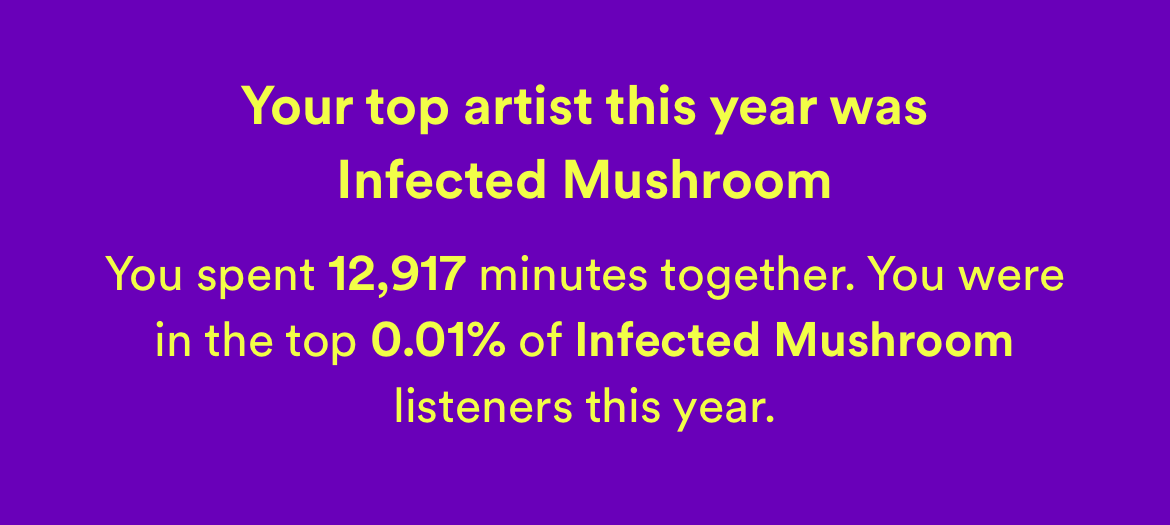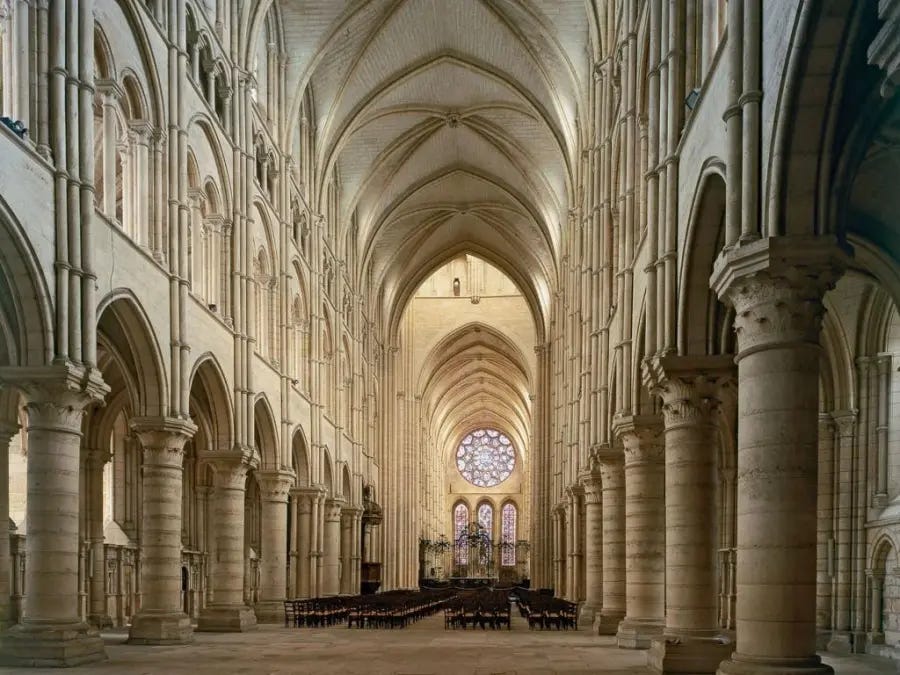An experience of beauty shook me to my core. I am suffering from the spiritual hollowness of modern culture and crave the sacred. I am trying to create the sound of a cathedral rave. I am looking for the best ideas to aid in the creation of sublimity.
These are the reasons why I am writing Mechanics of Aesthetics—formerly Extra Medium Please. I need to think, and as you all know, good thinking demands written word. Why not think in the company, conversation, and criticism of my fellow Substackers. Now, let me tell you about my path here and the plan for Mechanics of Aesthetics.
My artistic reawakening
I am endowed with two personality traits that sum to a curse: I am an aesthetic being above everything else, and I have frustratingly narrow tastes in art—or more specifically, in music, which is my greatest source of non-mathematical aesthetic satisfaction. Due to the narrowness of my taste, I’m always at the risk of running out of music that excites me; the fountain is always close to running dry. This scenario is not hypothetical: from 2014 to 2022, music fell almost completely out of my life. This was a big transition, given that my whole identity as a teenager was being a musician—17-year-old me wrote and recorded a metal album. But from 2014 onward, only Bach could induce that sense of sublimity that I’ve been chasing my whole life, and theoretical physics ended up taking over as my main source of beauty.
But in the period 2021-2023, while I was working on my PhD at MIT, I had an artistic reawakening. Four things happened to me. First, I had an experience of the sublime so violent that I count it as one of the most significant episodes in my life. In the moment, no words other than “staring into the face of God” seemed appropriate. Perhaps I will describe the experience one day, but language seems so woefully inadequate. Either way, I have been thinking obsessively about the nature of beauty and the meaning of my experience ever since. Throwing additional fuel on the thought-fire is this: I am suffering in the spiritual void so aptly described by Paul Kingsnorth, and this experience of the sublime is the closest I have ever come to filling it.
The second thing that happened to me is that I discovered the psychedelic trance duo Infected Mushroom, which completely reinvigorated my excitement for music. I listened to them obsessively in 2022, as Spotify will corroborate:
Infected Mushroom opened my eyes to new dimensions of music—especially highly ornate time-evolving sound design. Their music is catchy and danceable yet incredibly complex at the same time. I was never a dancer, but they made me want to dance.
Third, I started delving into Bach’s choral and organ works. When I listen to these, I am the closest I ever come to believing in God. In his music, I cannot help but hear the struggle and aspirations of all of humanity. Bach was singular.
Finally, while jumping back and forth between Infected Mushroom and Bach in 2022, an aesthetic vision crystallized on my horizon. I knew there was a type of music that didn’t exist, but that I wanted to make: a hybrid of psytrance and sacred music. Pipe organs and choirs meets trance-inducing basslines and glitchy timbres. I want to make the kind of music that would be played in a Sacral Rave at Chartres:
This kind of music is unlikely to gain me many listeners, given that the psytrance community, like most modern art scenes, is allergic to anything vaguely Christian-adjacent. I immediately decided to pick up electronic music production.
Then, one night after a year of practicing, I had an experience that of great inspiration. I produced a piece of music that, once I’d stumbled across the right sound, just wrote itself. It wrestled itself out of me. And it was the aesthetic I had envisioned a year earlier. This completely changed the game for me: now I knew for a fact that I can produce music that will give me immense personal aesthetic satisfaction. If I work at it, I can keep the fountain flowing.
It is a lot to ask people to listen to five minutes of music outside their niche, but if you want to hear the musical moment I am referring to, I suggest that you listen from 1:30 to 2:50.
If you want to see how I have further evolved this aesthetic vision, I recently made a piece of audiovisual art that is the piece I am most proud of so far. I think the visual art has something to offer even for people who are not into the kind of music that I make.
Mechanics of Aesthetics
So that was my artistic reawakening. Parallel with it, I formed a hypothesis about what beauty fundamentally is, which inspired me to start this Substack. I wrote it up in the inaugural post of Mechanics of Aesthetics: Beauty as entropic fine-tuning. At its core, this hypothesis proposes the following: beauty is experienced when we encounter sensory signals that are extremely rich with patterns that our brains can successfully decode, and there are good evolutionary reasons for it. Entropy is the central concept to grasp. I will not rehash the thesis here, but it is the spine of Mechanics of Aesthetics. This idea strongly shapes how I approach making and experimenting with art.
Going forward, I could pursue the idea of entropic fine-tuning further in academic style, scouring the neuroscience literature for empirical evidence and presenting it to you here.1 While I might spend some time doing this, it will not be the majority of what I do here. My day job is being a postdoctoral researcher, and I spend all day doing research and reading scientific papers. When I find a free moment after work, I am usually fed up with reading papers and want to make art. So instead, I am going to take the entropic fine-tuning framework and see how it performs as a mental model in my process of making and analyzing art. If it helps me make something more beautiful, then I am happy.
So what am I going to do going forward? In truth, I am going to write about whatever thoughts on aesthetics I am having at that moment. This probably means that a significant portion of my writing will involve analyzing and deconstructing concepts and phenomena that appear in art in order to understand what they are doing at a concrete practical level. Examples include things like ornament, tension, symmetry, symbol, transition, contrast, and variations-on-a-theme. These all serve important entropic functions that explain why are important to get right. The final goal is to be able to leverage these concepts and techniques myself to make better art. I do not want to theorize just for the sake of theorizing. If a theory of aesthetics doesn’t help me make something more beautiful, then I am not interested.
As I go along, I will show you the art I am making and how I am thinking about the process. I will make logs detailing the creation of pieces, share lessons I’ve learned, and illustrate how I thought about entropy while making my works. I will also write contemplations on beauty, computation, AI, the sacred, meaning, and their relationships.
If you have any questions or comments about Mechanics of Aesthetics, I’d be happy to chat with you in the comments. And with that, in the case you haven’t already, I invite you to subscribe, and leave you with a snippet of audiovisual art as a compensation for the annoying button:
In fact, since writing my original post, I have realized that that this idea seems to be present in recent academic literature. These papers seem like very promising places to start, and are on my reading list:
Aesthetics and predictive processing: grounds and prospects of a fruitful encounter








Thanks to @LaurenCortis for restacking this one. Looking forward to more, thank you!
i like what your doing with your writing and as someone also involved in EDM and who works in the field of generative design (code art), i really get your vibe on aesthetics.
this though:
“beauty is experienced when we encounter sensory signals that are extremely rich with patterns that our brains can successfully decode, and there are good evolutionary reasons for it.”
it’s interesting because for me ‘beauty’ has come to mean - yes some ‘thing’ encountered sensorially - but what makes it beautiful is that it connects me to some deeply perfect interface with the sublime. i know from your writing that you also have those hook-ups - so i guess we diverge at the emphasis on ‘decoding’ - because for me there is an undecodable esoteric quality to it that is its hallmark. though agnostically - it took me a minute to register- ‘decode’ def expresses the same idea of making it relatable.